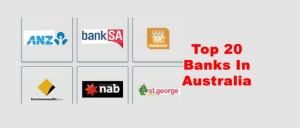
Advertisement of a business refers to the process of promoting and publicizing products, services, or the brand itself to a target audience with the aim of increasing sales, brand awareness, and customer engagement. Promoting businesses can take various forms, including print, digital, audio, and video, and are strategically designed to capture the attention of potential customers and persuade them to take action and best way to advertise your business for free.
To promote business, use persuasive techniques such as compelling visuals, catchy slogans, persuasive messaging, and emotional appeals to resonate with the audience and create a memorable impression. The main goal is to communicate the unique selling points of the product or service and convince consumers that choosing the advertised business will fulfill their needs or solve their problems better than competitors.
Advertisements are typically placed in various media channels, including newspapers, groups on facebook to promote your business,magazines, television, radio, websites, social media platforms such as a promote page facebook, billboards, and more. The choice of advertising channels depends on the target audience, budget, and the objectives of the advertising campaign.
Effective advertising campaigns can significantly impact a business's success, driving sales, increasing brand recognition, and fostering brand loyalty. To achieve this, businesses must carefully plan their advertising strategies, understand their target audience, and continuously monitor and possibly finding affordable ways to advertise free on google and optimize their campaigns to ensure they resonate with consumers and drive desired outcomes. Advertising is crucial for promoting your business and attracting customers.
Here are ten effective ways to advertise your business:
- Digital Marketing: Utilize various digital marketing channels such as social media marketing, email marketing, search engine optimization (SEO) as a online business advertising free, and pay-per-click (PPC) advertising to reach your target audience online.
- Social Media Advertising: Create engaging ads on popular social media platforms like Facebook, Instagram, Twitter, and LinkedIn to connect with potential customers.
- Content Marketing: Produce high-quality and valuable content, such as blog posts, videos, infographics, and podcasts, to establish your brand's authority and attract organic traffic.
- Google My Business: Ensure your business is advertise my business on google and listed and optimized on Google My Business, a free tool that helps you appear in local search results and Google Maps. This is useful platform for promoting businesses and serves as a website to advertise my business
- Influencer Marketing: Collaborate with influencers or industry experts who have a significant following to promote your products or services to their audience.
- Print Advertising: Use print media, such as newspapers, magazines, flyers, and brochures, to reach a local audience and create brand awareness.
- Outdoor Advertising: Consider billboards, banners, and posters strategically placed in high-traffic areas to capture the attention of passersby.
- Customer Referral Program: Encourage your satisfied customers to refer your business to others by offering incentives, discounts, or rewards for successful referrals to advertise my business for free.
- Networking and Events: Attend industry-related events, conferences, and networking gatherings to establish connections and promote your business directly to potential clients.
- Branding and Logo: Develop a strong and memorable brand identity, including a well-designed logo and consistent branding across all platforms, to create a lasting impression on customers.
Remember that the effectiveness of each advertising method can vary based on your target audience, industry, and budget. A well-rounded advertising strategy that combines multiple approaches will often yield the best results. Regularly monitor the performance of your advertisements and adjust your marketing efforts based on the data and feedback you receive.
How to promote business using Digital Marketing?
Promoting your business using digital marketing involves leveraging various online channels such as facebook business marketing and strategies to reach your target audience and drive engagement and conversions. Here's a step-by-step guide to help you effectively promote your business using digital marketing:
- Define Your Target Audience: Clearly identify your target audience based on factors such as demographics, interests, behaviors, and pain points. Understanding your audience will guide your digital marketing efforts and tailor your messages accordingly.
- Set Clear Goals: Determine what you want to achieve with your digital marketing efforts. Whether it's increasing website traffic, generating leads, boosting sales, or improving brand awareness, having specific goals will help you measure success and stay focused.
- Create a Professional Website: Ensure you have or create a site to promote business, a user-friendly and mobile-responsive website that represents your brand well. Your website is your digital storefront, so make it visually appealing and easy to navigate.
- Search Engine Optimization (SEO): Optimize your website and content for search engines to improve your organic search rankings. Use relevant keywords, create valuable content, and earn backlinks to increase your website's visibility.
- Content Marketing: Create and share valuable and relevant content through blog posts, articles, videos, infographics, and more. Content marketing helps establish your brand as an authority in your industry and attracts and retains customers.
- Social Media Marketing: Utilize social media platforms like Facebook, advertise business on instagram, Twitter, LinkedIn, and others to engage with your audience, share content, run ads, and build a community around your brand.
- Email Marketing: Build an email list of interested customers and send them targeted and personalized emails to nurture leads, promote products, and keep customers informed about your business or look for a places to market your business for free.
- Pay-Per-Click (PPC) Advertising: Run paid ads on platforms like Google Ads and social media to reach a broader audience and drive immediate traffic and conversions.
- Influencer Marketing: Collaborate with influencers or industry experts who have a significant following to promote your products or services to their audience.
- Online Contests and Giveaways: Organize online contests, giveaways, or promotions to create excitement around your brand and encourage audience participation and engagement. look for a rewarding ways that is user friendly for such people that have intention such as I want to advertise my business online.
- Customer Reviews and Testimonials: Encourage satisfied customers to leave positive reviews and testimonials on platforms like Google My Business, Yelp, and social media. Positive reviews build trust and credibility.
- Analytics and Measurement: Regularly monitor the performance of your digital marketing efforts using tools like Google Analytics. Analyze data to understand what works best and make data-driven decisions to optimize your campaigns.
Remember that digital marketing is an ongoing process, and consistency is key. Stay up-to-date with the latest digital marketing trends and strategies, and be open to experimenting to find what resonates best with your audience.
Step-By-Step best way to advertise your business online Using Social Media Advertising
Effectively promoting your business using social media advertising requires a well-thought-out strategy and careful execution. Here's a step-by-step guide to help you get started:
- Set Clear Goals: Define your objectives for social media advertising. Whether it's increasing brand awareness, driving website traffic, advertise your business here, generating leads, or boosting sales, having clear goals will shape your ad campaigns.
- Identify Your Target Audience: Understand your target audience's demographics, interests, behaviors, and pain points. Use this information to create highly targeted ads that resonate with your audience.
- Choose the Right Social Media Platforms: Determine which social media platforms align best with your business and target audience. Popular options include Facebook, Instagram, Twitter, LinkedIn, Pinterest, and Snapchat.
- Create Compelling Ad Content: Develop eye-catching and engaging ad content that aligns with your brand and objectives. Use high-quality images, captivating headlines, and clear calls-to-action (CTAs) to encourage clicks and conversions.
- Select Ad Formats: Different social media platforms offer various ad formats, such as image ads, video ads, carousel ads, and sponsored posts. Choose the format that suits your content and goals best.
- Set Budget and Schedule: Determine your advertising budget and schedule. Start with a smaller budget to test your ads' performance before scaling up.
- Define Ad Placement: Choose where your ads will be displayed on the social media platform. Options include newsfeeds, stories, sidebars, and messenger placements.
- Targeting and Custom Audiences: Utilize the platform's targeting options to narrow down your audience based on demographics, interests, behaviors, and custom audiences (e.g., website visitors, email subscribers).
- Run A/B Tests: Conduct A/B tests by creating multiple versions of your ads with slight variations and as a ways of marketing a business. Test different images, headlines, or CTAs to identify the most effective ad elements.
- Monitor and Optimize: Regularly monitor the performance of your ad campaigns using social media insights and analytics tools. Analyze data to identify what's working and what needs improvement. Adjust your targeting, ad content, and budget accordingly.
- Engage with Your Audience: Respond to comments, messages, and mentions promptly. Engaging with your audience humanizes your brand and builds a positive relationship with customers to advertise business online.
- Track Conversions and ROI: Implement conversion tracking to measure the success of your social media advertising efforts. Calculate the return on investment (ROI) to assess the profitability of your campaigns.
- Stay Compliant with Platform Policies: Familiarize yourself with the advertising guidelines and policies of each social media platform to avoid any issues with your ads being disapproved.
Remember that social media advertising requires continuous improvement and optimization. Stay up-to-date with social media trends and changes in algorithms to stay relevant and maximize the effectiveness of your campaigns.
Step-by-step guide to help you effectively promote your business using Content Marketing
Effectively promoting your business using content marketing involves creating valuable and relevant content that attracts and engages your target audience. Here's a step-by-step guide to help you leverage content marketing for your business:
- Define Your Content Marketing Goals: Determine what you want to achieve with your content marketing efforts. Whether it's increasing website traffic, generating leads, boosting brand awareness, or driving sales, having clear goals will guide your content strategy.
- Understand Your Target Audience: Conduct thorough research to understand your target audience's needs, preferences, pain points, and interests. This information will help you create content that resonates with your audience.
- Develop a Content Strategy: Create a content strategy that aligns with your goals and audience. Decide on the types of content you'll produce, such as blog posts, videos, infographics, ebooks, podcasts, or webinars.
- Create High-Quality Content: Produce content that is valuable, informative, and well-researched. Address your audience's pain points and provide solutions to their problems. Use engaging visuals and storytelling techniques to capture their attention.
- Optimize for Search Engines (SEO): Incorporate relevant keywords and phrases in your content to improve its visibility in search engine results. Focus on providing valuable information that answers users' search queries.
- Promote Across Multiple Channels: Share your content on various platforms, including your website, blog, social media, promote your facebook page, email newsletters, and other relevant online communities a places to advertise your business for free. Tailor your content for each platform to maximize its impact.
- Build an Email List: Encourage website visitors to subscribe to your email list. Use email marketing to share your content directly with your audience and nurture leads.
- Leverage Social Media: Share your content on social media platforms to reach a broader audience. Engage with your followers, respond to comments, and encourage social sharing to increase your content's reach.
- Guest Posting and Collaborations: Contribute guest posts to reputable websites and collaborate with influencers or industry experts. This helps you reach new audiences and establish your authority in your industry.
- Measure and Analyze Performance: Use analytics tools to track the performance of your content. Monitor metrics such as website traffic, engagement, conversion rates, and time spent on page. Analyze the data to understand what content resonates best with your audience.
- Adapt and Improve: Based on the insights from your performance analysis, adapt your content marketing strategy and create more of what works. Continuously improve your content to meet your audience's evolving needs.
- Stay Consistent: Consistency is key in content marketing. Maintain a regular publishing schedule to keep your audience engaged and build trust with your brand.
- Encourage User Engagement: Encourage comments, shares, and interactions with your content. Respond to feedback and engage with your audience to foster a sense of community.
By following these steps and staying committed to providing valuable content, you can effectively promote your business through content marketing and build a loyal customer base over time.
Step-By-Step Guide To Help You Promote Your promote company Using Google My Business:
Promoting your business using Google My Business (GMB) is essential for increasing your online visibility and attracting local customers. Here's a step-by-step guide to effectively utilize Google My Business:
- Claim or Create Your GMB Listing: If you haven't already, claim your Google My Business listing. Go to the GMB website Google My Business and sign in with your Google account. Follow the prompts to claim your existing business listing or create a new one.
- Provide Accurate Business Information: Fill out all the necessary business details accurately, including your business name, address, phone number, website URL, business category, and operating hours. Double-check the information for accuracy.
- Add Compelling Business Photos: Upload high-quality photos that showcase your business, products, services, and team. Include images of the exterior and interior of your establishment, products, and any other visuals that represent your brand.
- Write a Compelling Business Description: Craft a concise and compelling business description that highlights your unique selling points, what you offer, and what sets your business apart from competitors and look for free sites to advertise your business.
- Include Relevant Keywords: Integrate relevant keywords into your business description and other sections of your GMB listing. This will help your business show up in local searches related to your products or services and creative ways to market your business.
- Manage Reviews and Respond Promptly: Monitor and respond to customer reviews on your GMB listing. Address both positive and negative reviews professionally and promptly. Engaging with customers shows that you value their feedback.
- Add Posts and Updates: Utilize the Posts feature to share updates, promotions, events, and announcements directly on your GMB listing. Keep the content fresh and relevant to keep customers engaged.
- Utilize Q&A Section: Respond to customer questions in the Q&A section of your GMB listing. Provide helpful and accurate information to potential customers and creative ways to promote your business on social media.
- Enable Messaging: Enable messaging on your GMB listing to allow customers to contact you directly. Respond to inquiries promptly to provide excellent customer service.
- Monitor Insights: Regularly check the Insights section of your GMB dashboard to gain valuable data on how customers find your business and what actions they take. Use this information to improve your marketing strategy.
- Add Service Areas (if applicable): If your business serves specific service areas rather than having a physical location, define your service areas on your GMB listing.
- Encourage Customer Photos and Reviews: Encourage satisfied customers to share photos of their experiences with your business and leave positive reviews on your GMB listing. Positive reviews and images help attract potential customers it offers a best places to advertise your business.
By following these steps and consistently managing your Google My Business listing, you can increase your online presence, improve local search visibility, and attract more customers to your business.
Step-by-step guide To advertise For free Online Using influencer marketing
Influencer marketing can be a powerful way to promote your business and reach a wider audience through trusted personalities. Here's a step-by-step guide to effectively use influencer marketing:
- Define Your Objectives: Determine what you want to achieve with influencer marketing. Whether it's increasing brand awareness, driving website traffic, or boosting sales, having clear objectives will guide your strategy to advertise a business.
- Identify Your Target Audience: Understand your target audience and the influencers they follow. Look for influencers whose followers align with your target demographic and interests possible look for free website to advertise your business.
- Research Influencers: Conduct thorough research to find relevant influencers in your industry or niche. Look at their content, engagement rate, follower demographics, and credibility before considering them for collaboration.
- Choose the Right Influencers: Select influencers based on their relevance to your brand, engagement with their audience, and overall reputation. Micro-influencers (influencers with smaller but highly engaged followings) can be especially effective for niche markets.
- Reach Out to Influencers: Establish a genuine connection with the influencers you want to work with. Reach out through email or social media with a personalized message expressing your interest in collaborating.
- Negotiate Terms and Compensation: Discuss the scope of the collaboration, including the type of content, posting schedule, and compensation. Compensation can be monetary payment, free products, or a combination of both.
- Create a Collaboration Plan: Develop a detailed collaboration plan with the influencer. Discuss the key messages, campaign objectives, and guidelines for content creation to align with your brand's identity.
- Review and Approve Content: Review and approve the influencer's content before it is published. Ensure it adheres to your brand guidelines and meets the campaign objectives.
- Track and Measure Results: Use trackable links or promo codes to measure the effectiveness of the influencer marketing campaign. Monitor key performance indicators (KPIs) such as website traffic, sales, engagement, and follower growth.
- Engage with the Influencer's Audience: Engage with the influencer's audience by responding to comments, answering questions, and providing additional information about your products or services.
- Repurpose Influencer Content: Repurpose influencer-generated content on your own social media platforms, website, and other marketing channels. User-generated content can boost credibility and authenticity.
- Maintain Relationships: Nurture your relationships with influencers beyond a single campaign. Long-term partnerships can provide more significant benefits and create ongoing brand advocacy.
- Comply with Regulations: Ensure that influencers disclose their sponsored content according to advertising regulations in their respective regions. Transparency is crucial for building trust with the audience.
Remember that successful influencer marketing is not just about the number of followers an influencer has but also about their relevance to your brand and the authenticity of their engagement with their audience. A well-executed influencer marketing strategy can help your business reach new audiences and establish credibility in the market.
Step-By-Step Guide To Help You Effectively Promote Your Print Advertising
Effectively promoting your business through print advertising requires careful planning and execution. Here's a step-by-step guide to help you get the most out of your print advertising efforts:
- Define Your Advertising Goals: Determine what you want to achieve with your print advertising campaign. Whether it's increasing brand awareness, promoting a specific product or service, or driving foot traffic to your store, having clear goals will guide your strategy.
- Identify Your Target Audience: Understand your target audience's demographics, interests, and behaviors. This knowledge will help you tailor your print ads to resonate with your intended audience.
- Choose the Right Publication or Medium: Select the print publication or medium that aligns with your target audience. This could be newspapers, magazines, brochures, flyers, or direct mail.
- Design Compelling Ad Creatives: Create eye-catching and visually appealing ad designs. Use high-quality images, engaging headlines, and clear calls-to-action to grab readers' attention.
- Craft a Clear Message: Keep your message concise and focused. Clearly communicate the value proposition of your product or service and explain what sets your business apart from competitors.
- Include Contact Information: Provide essential contact details such as your business name, address, phone number, website URL, and social media handles to make it easy for potential customers to reach you.
- Utilize a Strong CTA: Include a compelling call-to-action (CTA) in your print ad. Encourage readers to take action, such as visiting your website, calling for more information, or visiting your store.
- Adhere to Branding Guidelines: Ensure that your print ads align with your brand's visual identity and messaging. Consistent branding builds trust and recognition among your audience.
- Choose the Right Placement: Consider the placement of your print ads within the publication. Strategic placement can increase visibility and reach out to websites to promote business.
- Monitor and Measure Results: Track the performance of your print ads by using unique URLs, QR codes, or promotional codes to gauge the response. Measure the ROI to evaluate the effectiveness of your print advertising efforts.
- Run A/B Tests (if applicable): If you have the opportunity to run different versions of your print ads (e.g., in A/B testing), experiment with slight variations to see which performs better.
- Maintain Consistency: If you plan to run print ads regularly, maintain a consistent presence in your chosen publications or mediums. Repetition can reinforce your message and increase brand recall.
- Integrate with Online Marketing: Consider integrating your print advertising efforts with your online marketing strategies. Use QR codes or unique URLs that lead readers to relevant landing pages or exclusive offers on your website. By following these steps and carefully planning your print advertising campaign, you can effectively promote your business and reach your target audience through print media and advertise business for free. Regularly assess the results and make necessary adjustments to improve the impact of your print ads and promote your business on social media.
Outdoor advertising, also known as out-of-home (OOH) advertising, is a form of marketing communication that uses physical media to reach and engage audiences when they are outside of their homes. It is ways to promote a businessen and compasses a wide range of advertising formats placed in various public spaces to deliver brand messages to a diverse and often large audience.
Outdoor advertising can take many forms, including:
Billboards: Large, static or digital displays placed along roadsides, highways, and busy urban areas to capture the attention of passing motorists and pedestrians.
Transit Advertising: Ads displayed on buses, trains, taxis, and other public transportation vehicles, targeting commuters and travelers.
Street Furniture: Ads placed on bus shelters, kiosks, benches, and information panels in high-traffic urban areas.
Posters: Smaller printed ads displayed on walls, construction sites, and other surfaces in public spaces.
Digital Screens: High-definition digital displays found in malls, airports, stadiums, and other public venues as way to advertise small business.
Mobile Billboards: Ads displayed on trucks or trailers that move around busy areas, providing a more dynamic and attention-grabbing presence.
The primary purpose of outdoor advertising is to create brand visibility, increase brand awareness, and deliver a brief and impactful message to a broad audience. It allows advertisers to reach consumers during their daily routines, whether they are commuting to work, shopping, or participating in recreational activities.
Outdoor advertising is especially effective in capturing the attention of people on-the-go and in creating a lasting impression due to its large format and strategic placement in high-traffic areas. It complements other advertising channels and helps reinforce brand messaging through repetitive exposure.
With the advent of digital technology, outdoor advertising has evolved to include dynamic and interactive elements, such as video content, real-time updates, and targeted messaging. This flexibility allows advertisers to tailor their messages based on location, time of day, and audience demographics, increasing the relevance and impact of their campaigns. The outdoor advertising remains a valuable and influential component of the advertising mix, providing businesses with a way to reach a diverse audience, ways to market your business, and create a strong brand presence in the physical world.
Here's The Cheap Ways to Promote Your Business Using outdoor advertising:
- Define Your Advertising Goals: Determine the objectives of your outdoor advertising campaign. Whether it's increasing brand awareness, promoting a specific product or service, or driving foot traffic to your store, clear goals will guide your strategy such as promote my business for free.
- Identify Your Target Audience: Understand your target audience's demographics, behaviors, preferences and best sites to advertise your business. This information will help you choose the right outdoor locations to reach your intended audience effectively.
- Select the Right Outdoor Advertising Medium: Choose the most suitable outdoor advertising medium for your campaign. Options include billboards, transit ads (buses, trains), street furniture (bus shelters, kiosks), posters, and digital screens.
- Choose Strategic Locations: Select high-traffic and strategic locations for your outdoor ads. Consider areas where your target audience frequently passes by or gathers and advertise your business online
- Design Eye-Catching Ad Creatives: Create visually compelling ad designs that can be easily understood and seen from a distance. Use bold colors, clear fonts, and high-resolution images to grab attention.
- Keep the Message Concise: Ensure that your message is concise, easy to read, and gets the main point across quickly. Avoid clutter and unnecessary information that might overwhelm viewers.
- Include Contact Information: Provide essential contact details such as your business name, phone number, website URL, and social media handles to make it easy for potential customers to reach you.
- Utilize a Strong Call-to-Action (CTA): Include a clear and persuasive CTA in your outdoor ads. Encourage viewers to take action, such as visiting your store, website, or calling for more information.
- Adhere to Branding Guidelines: Ensure that your outdoor ads align with your brand's visual identity and messaging. Consistent branding across all advertising channels enhances brand recognition.
- Use Large Fonts and High Contrast: Use large fonts and high contrast colors to make the text easily readable from a distance. This is especially important for billboards and posters.
- Consider Digital Outdoor Advertising: If budget allows, explore digital outdoor advertising options. Digital screens and billboards offer more flexibility in content rotation and can be updated in real-time.
- Monitor and Measure Results: Track the performance of your outdoor advertising campaign. Use unique URLs or QR codes to measure the response and gauge the campaign's effectiveness.
- Maintain Campaign Consistency: If running multiple outdoor ads, maintain consistent messaging and design elements throughout the campaign for increased impact and recognition.
- Ensure Compliance with Regulations: Be aware of local regulations and guidelines for outdoor advertising in the areas where you plan to place your ads.
By following these steps and carefully planning your outdoor advertising campaign, you can effectively promote your business and increase brand visibility to your target audience in outdoor settings. Regularly assess the results and make necessary adjustments to improve the impact of your outdoor ads.
Ways To Advertise your business For Free using Customer Referral Program
Implementing a customer referral program can be an effective way to leverage your existing satisfied customers to bring in new business. Here's a step-by-step guide to help you promote your business using a customer referral program:
- Define Your Referral Program Goals: Determine what you want to achieve with the customer referral program. Whether it's increasing sales, acquiring new customers, or boosting brand loyalty, clear goals will guide your program's structure and promote your business.
- Choose the Right Incentives: Decide on the incentives you'll offer to both the referring customer and the referred customer to promote business online. These incentives could be discounts, cash rewards, free products, or exclusive offers it offers an opportunity or a places to advertise your business.
- Design a Clear Referral Offer: Create a compelling and straightforward referral offer that clearly communicates the benefits to both the referrer and the referee. Make it easy for customers to understand and participate in the program.
- Create Referral Program Guidelines: Establish specific rules and guidelines for the referral program, including eligibility criteria, how referrals should be submitted, and any terms and conditions.
- Promote the Referral Program: Spread the word about your referral program through various marketing channels. Use your website, social media for business marketing, email newsletters, and physical store displays to promote the program.
- Leverage Personalized Referral Links: Provide customers with personalized referral links that they can easily share with their friends and family. These links will help track the referrals accurately and one of the best places to advertise your business.
- Optimize Your Thank-You Page: After a successful referral, show a thank-you message on the website or app, along with clear instructions for claiming the reward.
- Track and Monitor Referrals: Implement a system to track referrals and monitor the performance of the program and look for a websites to promote your business. Use referral tracking software or unique referral codes to attribute referrals correctly.
- Recognize and Reward Referrers: Regularly acknowledge and reward customers who actively participate in the referral program. Consider sending personalized thank-you notes or offering additional rewards for multiple referrals.
- Measure and Analyze Results: Regularly analyze the success of your customer referral program. Measure key performance indicators (KPIs) such as the number of referrals, conversion rates, and customer acquisition costs.
- Optimize the Program: Use the data and insights from your analysis to refine and optimize your customer referral program. Consider experimenting with different incentives or promotional strategies to improve results and ways to advertise a business.
- Communicate with Referrers: Keep referrers updated about the status of their referrals. Send notifications when their friends complete a referral or when they become eligible for rewards it goes a long way to advertise your business.
- Encourage Word-of-Mouth Marketing: Encourage customers to share their positive experiences with your brand outside of the formal referral program. Positive word-of-mouth can supplement the program's effectiveness as a ways to promote your business
- Maintain Program Transparency: Be transparent with customers about how the referral program works and the status of their referrals. This helps build trust and encourages continued participation to advertise my business.
By following these steps and consistently engaging with your customers, you can effectively promote your business using a customer referral program. A well-executed referral program can lead to increased customer acquisition, improved customer loyalty, and higher brand advocacy.
Step-by-step guide on how to promote your business using Networking and Events:
Promoting your business through networking and events can be a powerful way to build valuable connections, establish your brand, and attract potential customers. Here is best way to market your business using networking and events:
- Set Clear Objectives: Define the specific objectives you want to achieve through websites to advertise your business networking and events. Whether it's expanding your customer base, forming partnerships, or showcasing your expertise, having clear goals will guide your strategy.
- Identify Relevant Events: Research and identify networking events, conferences, trade shows, and industry gatherings that align with your business niche or target audience. Look for both in-person and virtual events to promote my business.
- Prepare Your Elevator Pitch: Craft a concise and compelling elevator pitch that introduces your business and explains what sets you apart. Your elevator pitch should be easy to remember and leave a lasting impression.
- Create Engaging Marketing Collateral: Prepare business cards, brochures, and other marketing materials that showcase your brand and key offerings. Make sure these materials reflect your brand identity and are professional in appearance.
- Leverage Social Media: Use social media to promote your participation in upcoming events. Share event details, your booth or presentation schedule, and encourage your followers to attend.
- Network with Attendees: Actively engage with other attendees, exhibitors, and speakers during events. Be approachable, ask questions, and genuinely listen to others to build meaningful connections.
- Participate as a Speaker or Panelist: If possible, seek opportunities to speak or participate in panel discussions at events. Speaking engagements can position you as an expert in your industry and attract attention to your business.
- Host Your Own Event: Consider hosting your own networking event or workshop. This allows you to tailor the event to meet your business objectives and showcase your expertise.
- Collect Contact Information: Collect contact information from new connections you make during events. Follow up with personalized emails or LinkedIn messages to nurture these relationships further and build a sites to advertise your business.
- Offer Value: Provide value to attendees through knowledge-sharing, free resources, or exclusive offers. Demonstrating value builds trust and makes people more likely to engage with your business.
- Leverage Event Sponsorship Opportunities: If applicable, explore sponsorship opportunities at events. Sponsorship can increase brand visibility and demonstrate your commitment to the industry and find ways to promote your business on social media.
- Capture and Share Event Highlights: Take photos and videos during events and share them on your social media channels and website. This creates post-event buzz and reminds people of your presence.
- Follow Up After Events: After the event, follow up with the contacts you made, thanking them for their time and expressing interest in continuing the conversation drive a effective ways to advertise your business.
- Measure Event ROI: Assess the effectiveness of each event by tracking metrics such as new leads generated, business partnerships formed, and sales conversions attributed to networking efforts.
- Build Long-Term Relationships: Maintain relationships with your networking contacts beyond the events. Engage with them on social media, share valuable content, and seek opportunities for collaboration.
By following these steps and being proactive in your networking efforts, you can effectively promote your business through networking and events. Building strong relationships within your industry and target audience can lead to increased brand awareness, customer acquisition, and business growth.
There are some frequently asked questions about how to promote a business along with their answers:
Q1: What are the most effective marketing strategies to promote my business?
A: The most effective marketing strategies vary depending on the business type and target audience. Digital marketing, social media advertising, content marketing, and SEO are generally considered highly effective for reaching a wide audience and driving engagement.
Q2: How can I use social media to promote my business and reach more customers?
A: Social media platforms offer various advertising options and tools to target specific demographics and interests. Creating engaging content, running paid ads, and engaging with followers can help promote your business and expand its reach.
Q3: Are there any low-cost or free marketing methods to promote my small business?
A: Yes, there are several low-cost or free marketing methods, such as social media marketing, content marketing, email marketing, and search engine optimization. Utilizing these channels strategically can yield significant results without a large budget.
Q4: How can I optimize my website for better search engine visibility to attract more organic traffic?
A: Implementing SEO techniques, including using relevant keywords, creating high-quality content, optimizing meta tags, and building quality backlinks, can improve your website's search engine visibility and organic traffic.
Q5: What role does content marketing play in promoting a business, and how can I create engaging content?
A: Content marketing helps establish your brand as an authority in your industry, attract and engage your target audience, and drive organic traffic to your website. To create engaging content, focus on providing value, using visuals, and telling compelling stories.
Q6: How can I use email marketing to reach my target audience and nurture leads?
A: Email marketing allows you to communicate directly with your audience, nurture leads, and build customer loyalty. Segment your email list, personalize content, and send targeted messages to increase engagement and conversion rates.
Q7: How can I effectively use Google My Business to increase my local visibility and attract customers?
A: Claim and optimize your Google My Business listing with accurate information, high-quality images, and customer reviews. Regularly update your business hours and respond to customer queries to enhance your local visibility and credibility.
Q8: What are some ways to incentivize customer referrals and word-of-mouth marketing for my business?
A: Offer referral rewards or discounts to customers who refer new customers to your business. Providing exceptional customer service and encouraging reviews and testimonials can also promote word-of-mouth marketing.
Q9: How can I stay updated on the latest marketing trends and strategies to continually improve my promotional efforts?
A: Follow reputable marketing blogs, attend industry conferences and webinars, and join marketing-related communities to stay informed about the latest trends and strategies in the marketing world.
In conclusion, the best ways to promote a business encompass a combination of both traditional and digital marketing strategies. The key is to tailor the promotional efforts to the specific business goals, target audience, and available resources. Remember, each business is unique, so it's essential to tailor your marketing strategies based on your specific goals, target audience, and budget. Regularly evaluate the performance of your marketing efforts and adapt your approach to achieve the best results. We believe that this article is of help to you happy reading!







 Optimus Bank USSD Code - How To Use It
Optimus Bank USSD Code - How To Use It